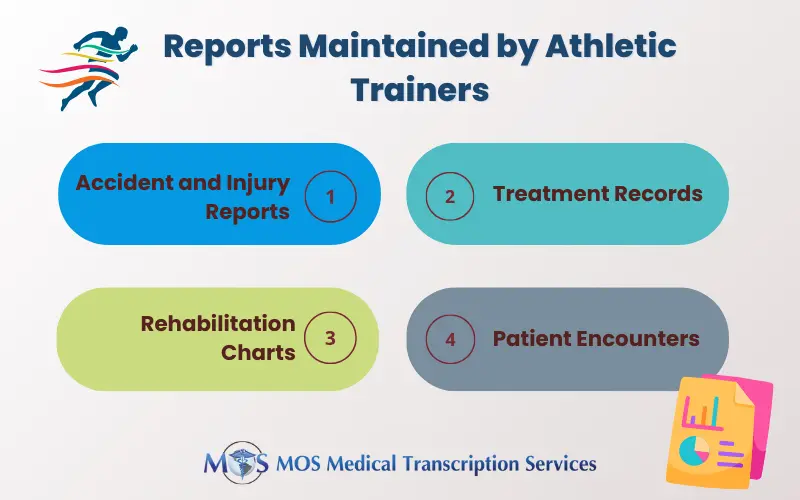
Table of Contents
Athletic trainers (ATs) are highly educated and skilled professionals specializing in the management, prevention, and recovery of injured athletes. They work with coaches, physicians, and physical therapists. Documentation and computerized record-keeping are a crucial for ATs to maintain accurate, up-to-date, and complete information about patients at the point of care and ensure that patient records are readily available at any time. Accurate and timely documentation of injuries by ATs play a crucial role in reducing liability, tracking injury trends and making decisions about the best course of treatment. Partnering with a reliable provider of sports medicine transcription services is a practical approach to ensure efficient record-keeping.
Importance of Documentation and Record-keeping in Sports Medicine
Accurate and up-to-date athletes’ medical records documentation:
- Offers a complete, accurate and timely record of a patient’s complete medical history
- Provides a record of the initial evaluation of a condition, treatments and interventions
- Facilitates better patient management
- Supports continuity of care
- Serves as a valuable reference for treatment planning and evaluation
- Reduces liability and provides protection in a legal case by giving evidence of what was or was not done in a given situation
- Promotes compliance with medical industry standards and statutory regulations
- Facilitates communication with multiple caregivers across various settings and ensures collaborative approach to care
- Helps in claim submission for timely and appropriate reimbursement
Types of Records and Reports ATs Maintain
According to a report from Human Kinetics, ATs should document “any accident of which they are aware (even if it is not due to athletic participation), any treatment that an athlete receives, and the rehabilitation progress that an athlete makes”. They should document injury/illness prevention, education/wellness promotion, emergency care, examination and clinical diagnosis, therapeutic intervention and rehabilitation.

ATs maintain different types of reports:
Accident and Injury Reports
- athlete’s name and age
- date of injury, date of the report
- the athlete’s sport
- the body part that is injured
- information about how the injury or accident occurred
- whether the injury is a new or previous one
- AT’s thoughts about the injury and signature
Treatment Records
Any treatment an athlete received such as –
- ice or heat application, elastic wraps
- stretching, strengthening
- splinting
- medical referral
Rehabilitation Charts
- injury assessment
- recommended rehabilitation programs
- specific treatment provided to the athlete and the date
- problems or complaints or any changes in treatment
- athlete’s response to the treatment and re-evaluation data
Patient Encounters
- interactions with the patient when providing athletic training services
- written, verbal, or electronic communication with any relevant individual or entity
ATs also use diverse injury-tracking systems such as Athletic Trainer System (ATS), SportsWare, Sports Injury Monitoring System (SIMS), SimTrack, NCAA, and Presagia Sports that store and provide valuable information such as demographics, injury report, progress notes, medication log, insurance information, exercise flow sheet and more.
The National Athletic Trainers’ Association (NATA) recommends that ATs be aware of the documentation needs specific to their setting and comply with all state regulations, established guidelines, and institutional requirements/expectations. Leveraging EMR-integrated medical transcription services is a reliable way for ATs to maintain compliant, accurate and complete documentation that can be securely shared with patients and other clinicians.


